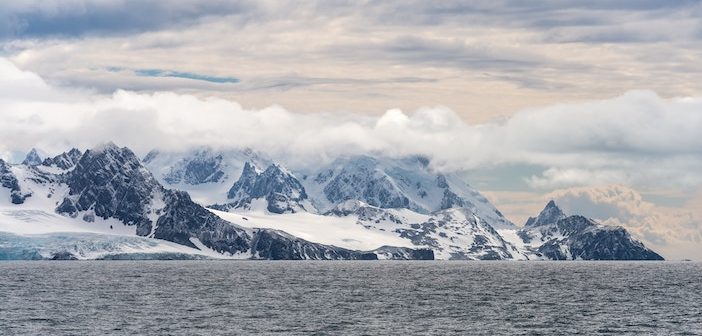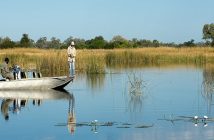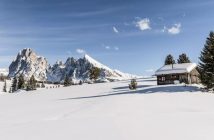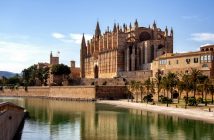The southern ocean is notorious. You expect mountainous seas and vertiginous swells, heavy cloud and painfully freezing conditions – maximum 0°C even in midsummer. It was somewhat surprising then to be there in late summer (mid-February) on a calm, almost flat sea. There was admittedly quite a bit of weather. In the course of just one morning there was snow, hail and bright sunshine. And this was before we’d even embarked on the ocean proper and were still in the bay of Ushuaia, Argentina’s southernmost city.
We had just rounded Cape Horn (named after the city of Hoorn in northern Holland) on board Fred Olsen’s Balmoral and, even going around the Cape, the sea was surprisingly benign. Most of the time the single family that inhabits the lonely lighthouse on the Cape is cut off and reliant on supplies from passing ships. That day it looked like really quite an easy place to moor and pop in for a cup of tea.
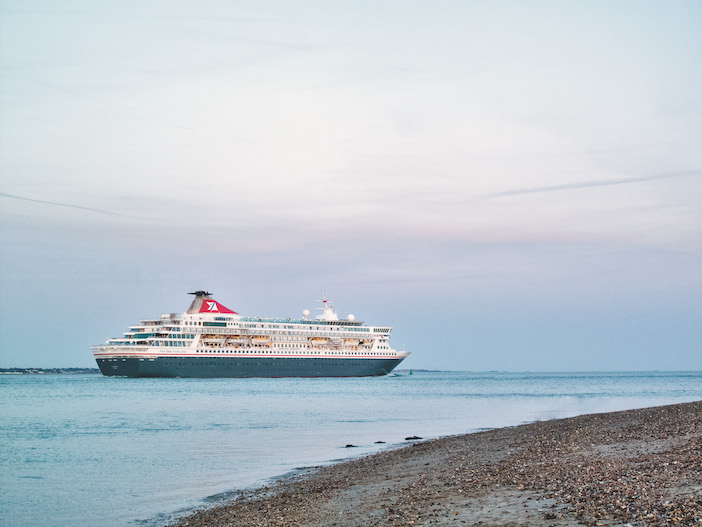
Ushuaia is on the Argentinian side of Tierra del Fuego – the border with Chile is quite literally a straight line not quite down the middle. The many islands in the bay and into the western fjords are similarly divided up so, out on a catamaran, we slip between territories on a craft that is astonishingly manoeuvrable. As a result, we get up almost close enough to touch (we don’t of course) the birds and animals on the many islands scattered around the bay and into the Beagle Channel.
Perhaps one of the most surprising things here is that no one seems at all disturbed by our presence despite the proximity. One island is literally covered with tiny snowy white South American terns. Another has hundreds of Imperial (aka blue-eyed) cormorants who from a distance look very like penguins – except, of course, unlike penguins they can fly. They don’t fly as we approach, though, while the sealions around the island are popping their heads up out of the water, seemingly as curious about us as we are about them.
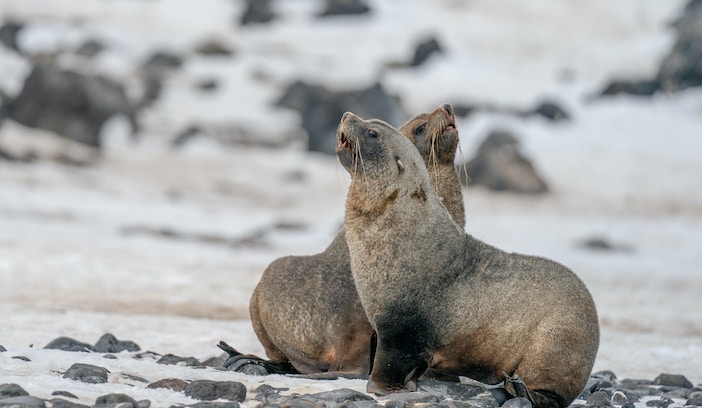
Fur Seals (Photo by Bob Brewer, courtesy of Unsplash)
Entrancing as this is, it is as nothing to the multitude of wildlife we are to find in Antarctica itself. On board the Balmoral, there is a team – Ocean Wildlife Encounters – who not only spend a lot of time gazing out to sea identifying and photographing but give lectures on everything we’re likely to see, how to identify different species not just by their appearance but also their behaviour. Whales, for instance, can be identified by the way they spout from their blowholes – sideways, vertically or, in the case of grey whales in a heart shape and they have two blow holes and the sprays curve and meet in the middle.
It’s a good day’s sailing from Ushuaia – still on that oddly calm sea – but as we arrive in Antarctica the clouds are lowering and visibility is poor. Then as the clouds drift away, astonishing peaks appear, ice and snow sparkle in the light and glaciers 10m deep glisten blue (in the centre they are some 3 miles deep). That first afternoon we glide slowly through first the Neumayer and then the Lemaire Channel, their cliffs soaring magnificently out of the dark water.
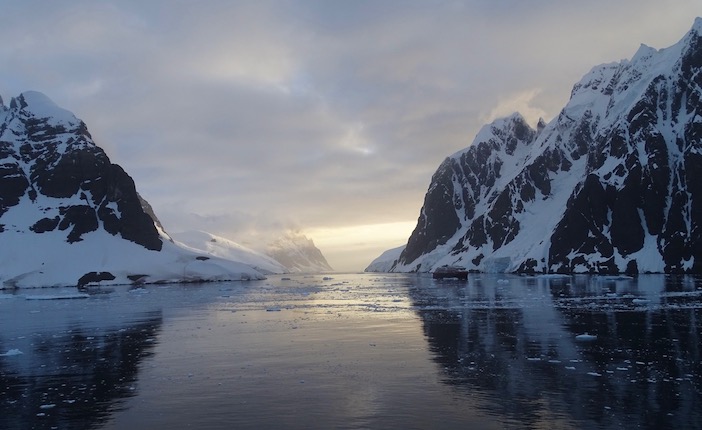
Sunset in the Lemaire Channel (photo by Anna Selby)
We pass Port Lockroy, the only inhabited place in Antarctica in the middle of last century, now a museum. The medical officer for the scientists there is reputed to have burned it down as he couldn’t face returning to such a cruel climate. We pass ice floes – a family of penguins and a leopard seal share the surface of a small iceberg.
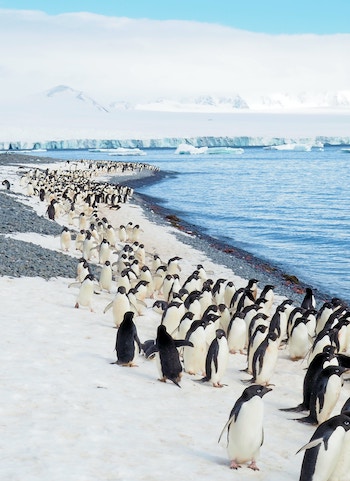
Photo by Tam Minton (courtesy of Unsplash)
There are bigger ones ahead. In Paradise Bay, a massive one blocks our way so we can’t get too far inside. This doesn’t really matter, though, for our purposes. Paradise Bay was given its name by whalers who found this was a great place for the hunt. The whales are, thankfully, still there. In just one afternoon we saw 92 humpbacks and a couple of minkes.
The next morning, the captain pointed out as we approached Deception Island that its white appearance was nothing to do with snow, it was actually the presence of thousands of penguins. The island got its name from the early whalers who realised it wasn’t a true island at all but a volcano that had sunk and its caldera was flooded by the sea. It still erupts.
This is a pristine, magnificent place, unlike anywhere on the planet but also, as we know, fragile. It is here that 60% of the globe’s total fresh water is stored in the ice sheet and we pass endless snow-covered cliffs, glaciers and icebergs in these coldest of waters.
To the untrained eye, it is impossible to know how Antarctica is changing as the world’s climate changes around it but the NASA stats say that the ice mass is melting at an average rate of around 150 billion tons a year. What is clear even on a first visit, is this unique place must be preserved at all costs – for all our sakes.
For more information about Fred Olsen cruises, including destinations, details of ships and cruise routes for 2023-25, please visit www.fredolsen.com.
Header photo: Elephant Island by Paul Carroll (courtesy of Unsplash)

